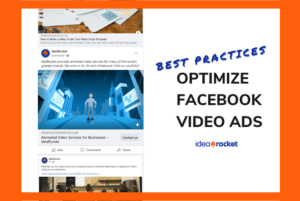Common video mistakes can drive people to turn off your content and find something else to watch. Although consumers love watching video, some businesses are missing the mark. They’ve invested in good quality video and audio. They have a clear message. Yet somehow their videos aren’t hitting their marketing goals. If this describes your business, you might want to check your content for these 8 video mistakes.
What Video Mistakes Could Cost You
Before we dive into the 8 video mistakes, let’s talk about why this matters. In 2020, the number of digital video viewers in the U.S. hit 244.4 million according to Business Insider. Whether you’re making the content they came to watch, or the ads that pop up in between, that’s a huge audience.
Marketers are taking note. That means you’ll have competition from the 86% of businesses that use video as a marketing tool. In this environment, high quality authentic video content is essential. To keep customers from changing the channel, or swiping to the next video, avoid these common video mistakes.
1. Not Hooking the Viewer Immediately
A slow start may be fine for a historical drama based on your favorite mystery novel, but marketing videos can’t get away with that style of storytelling. You need to capture audience attention immediately. If you’re still working from traditional story structure, it’s time to shake things up. Rethink how you structure your storytelling to create a video that grabs your viewers and won’t let go.
Your video hook should be targeted to your specific audience. It doesn’t have to be an explosion or flashy graphic. Some audiences might respond better to an unusual camera angle, a surprising fact, or a direct question.
How to tell if you’re making this mistake: You’re getting plenty of impressions but no views, or your watch rate drops dramatically in the first few seconds.
2. Overselling your Product or Service
You want to sell your product or service, but you don’t want to sound too salesy. Overused marketing words like best, revolutionary, or miracle are likely to remind viewers of late night TV ads. That’s not a good look.
Presenting too many scenarios or features in one video can leave viewers thinking you’re a snake oil salesman. It’ll cure my rash and help me lose 10 pounds? Really?
Consumers are savvy enough to notice when something sounds too good to be true. You want audiences to believe your product or service can solve their problem. So make sure you present the problem and the solution, without getting distracted by fringe benefits or empty promises.
How to tell if you’re making this mistake: Look at the comments. If people are expressing disbelief, you’re probably overselling. Also check your script, get rid of any word that sounds like marketing fluff.
3. Focusing on Your Business
We’ve said it before and we’ll say it again: Your marketing videos aren’t about you. They should always be about your customer. Keep the focus firmly on their needs, goals, and challenges. In most cases, the customer should be the hero of the story. You’re just here to help.
This viewer-focused approach to video marketing should inform every choice you make. From the story you tell to the background music, every decision should focus on engaging a specific audience.
How to tell if you’re making this mistake: Watch your video and track how many times it says “we” or “I” in reference to your business. Do you spend more time talking about your team or your product than solving the customer’s problem?
4. Failure to Brand
A video can be entertaining and even memorable, but what have you really accomplished if viewers don’t remember who made it? A video that doesn’t match your brand may not cause an immediate problem. Viewers could still convert. However, it can erode brand recognition over time.
Ideally, you should have video branding guidelines in place that every video follows. Make sure you’re including brand colors, logos and messaging in your video without going overboard. Branding doesn’t have to be aggressive to be effective. In the screenshot below from our Kite video, notice how we used the blue and orange palette to subtly infuse our brand into every scene.

How to tell if you’re making this mistake: Do you have video branding guidelines (not just general content guidelines)? Check your video for your logo, signature colors, and taglines.
5. Striking the Wrong Tone
It’s not what you say, it’s how you say it. Tone can be tricky to get right, but it’s vital if you want viewers to respond positively to your video. The right tone shows that you understand your customer. The wrong tone leaves them feeling misunderstood or even offended.
The tone of marketing changed when the pandemic hit. Businesses that failed to notice found themselves embroiled in controversy or simply ignored by audiences. The better you know your audience, the easier it will be to strike the right tone.
How to tell if you’re making this mistake: Once again, listening is the answer. Talk to customers or check out the comments. Are people responding with anger, sarcasm or frustration? Your tone might be to blame.
6. Inconsistent Style or Messaging
A video that veers from serious to funny and back is hard to follow. Ditto for one that changes styles or design elements without a clear reason. People tend to tune out things they don’t understand, so make sure your video is consistent in look, message and tone.
It’s okay to surprise your audience, just make sure you’re doing so with intention. The surprise should be relevant to the core message and match your branding. Most importantly, make sure that your videos are consistent with all of your other marketing efforts. If your brand tends to be serious and informative, making a series of videos full of slapstick humor might just confuse your audience.
How to tell if you’re making this mistake: Check your watch metrics. Do you see any big drop-offs? What’s happening on screen when audiences tune out? If you’ve suddenly changed style, tone, or messaging, inconsistency might be an issue.
7. Trying To Do Too Much at Once
Your video should have a single, clear goal. Everything in it should be focused on achieving that goal. So if you’re making a video to introduce new customers to your product, you shouldn’t be thanking long-term customers for their support. If you’re explaining how your new product works, don’t digress into company history.
Have more than one message to share? That’s fine. Make multiple videos like MSA did when they wanted to explore three different features of their new breathing apparatus: safety, communications, and ergonomics. A video series makes your message more manageable.
How to tell if you’re making this mistake: Customers are confused. You can also look at your script and see how many features or solutions you’re presenting. If there’s more than one dominant theme, you’re probably trying to do too much.
8. Being Unclear About What’s Next
Don’t assume customers know what to do next. End every video with a call to action. This could be in the video itself, or in the text around the video. Include messaging like:
- call now
- apply today
- visit our website for details
- like and subscribe
- watch this next
Your call to action should be a single action viewers can easily take in that moment. Wherever possible include a link or button. QR codes are also becoming more popular as engagement tools.
How to tell if you’re making this mistake: If you haven’t included a call to action, viewers won’t act. Check that your CTA can be completed immediately and easily.
The Biggest Video Mistake You Can Make
The biggest mistake is making videos just to stay on trend. Make sure every video you produce has a clear purpose and a defined audience. It should align with your branding and overall strategy. In short, it should be authentic to your brand and useful for your customers.
For help creating quality video content that meets your marketing goals, contact the experts at IdeaRocket.




